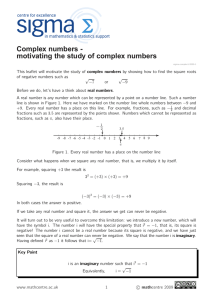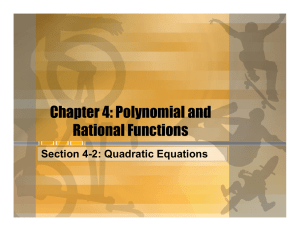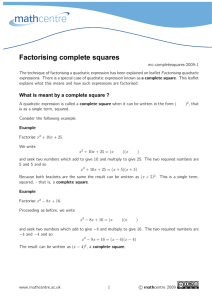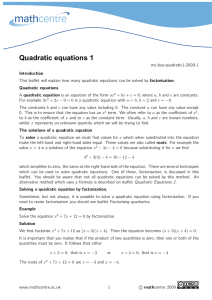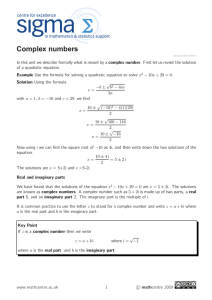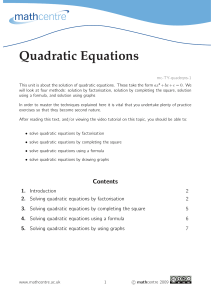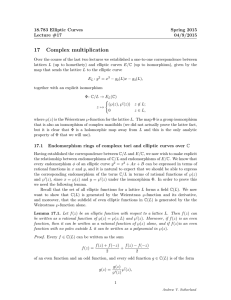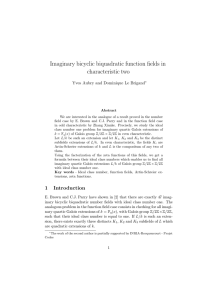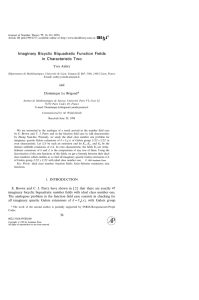Imaginary numbers and quadratic equations
advertisement
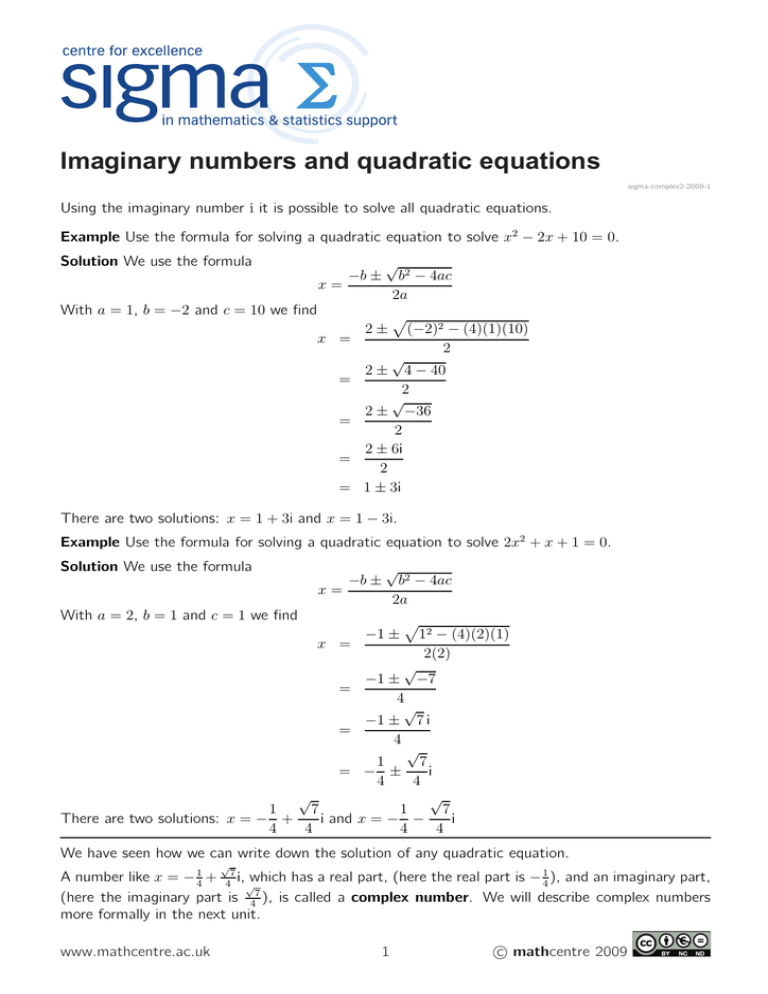
Imaginary numbers and quadratic equations sigma-complex2-2009-1 Using the imaginary number i it is possible to solve all quadratic equations. Example Use the formula for solving a quadratic equation to solve x2 − 2x + 10 = 0. Solution We use the formula x= −b ± With a = 1, b = −2 and c = 10 we find x = √ b2 − 4ac 2a 2± p √ (−2)2 − (4)(1)(10) 2 4 − 40 2 √ 2 ± −36 = 2 2 ± 6i = 2 = 1 ± 3i = 2± There are two solutions: x = 1 + 3i and x = 1 − 3i. Example Use the formula for solving a quadratic equation to solve 2x2 + x + 1 = 0. Solution We use the formula x= −b ± √ b2 − 4ac 2a With a = 2, b = 1 and c = 1 we find x = = = = √ 7 1 There are two solutions: x = − + i and 4 4 p 12 − (4)(2)(1) 2(2) √ −1 ± −7 4 √ −1 ± 7 i 4 √ 7 1 i − ± 4 4 √ 7 1 x=− − i 4 4 −1 ± We have seen how we can write down the solution of any quadratic equation. √ A number like x = − 41 + 47 i, √which has a real part, (here the real part is − 41 ), and an imaginary part, (here the imaginary part is 47 ), is called a complex number. We will describe complex numbers more formally in the next unit. www.mathcentre.ac.uk 1 c mathcentre 2009




